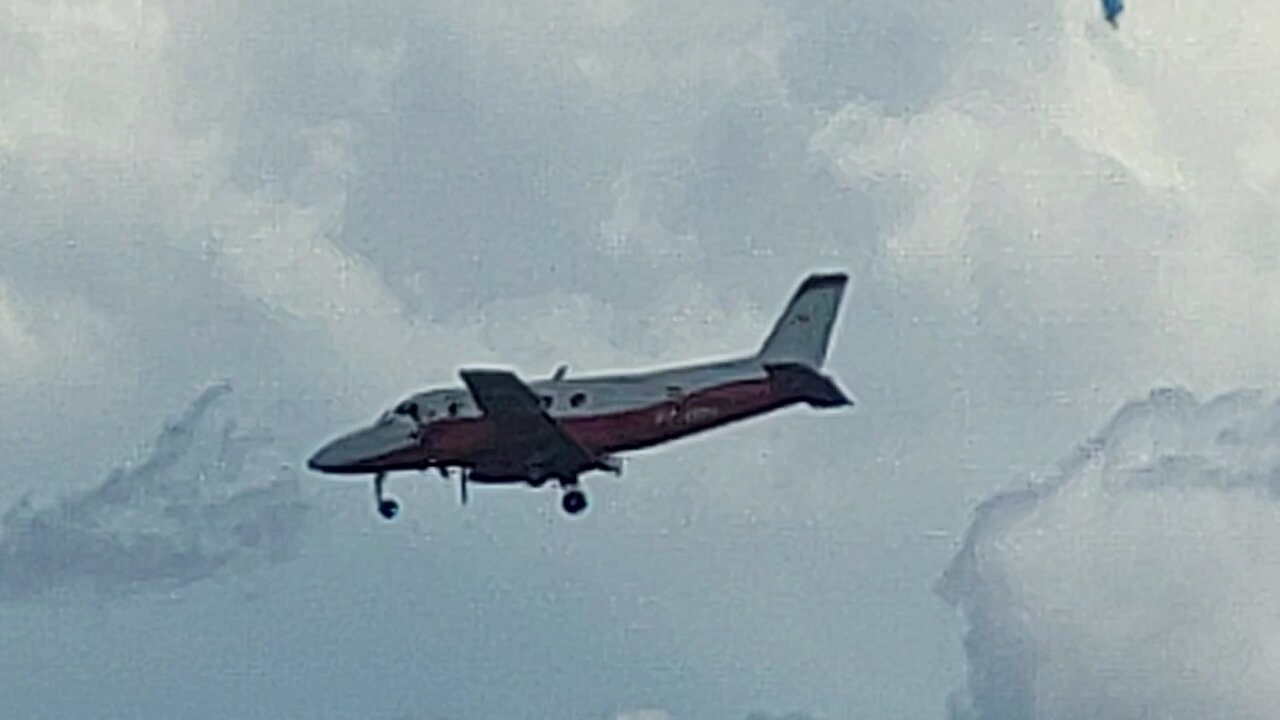Premium Only Content

A bit of the history of the Embraer 110 Bandeirante
Registration:PT-ODY
The Embraer EMB-110 "Bandeirante" is a twin-engine turboprop aircraft intended for civil and military use, with capacity for twenty-one passengers, developed and manufactured in Brazil by Embraer between 1973 and 1991.
Type / Mission
Civil and military transport aircraft, with turboprop engines, twin-engine monoplane
Country of origin
Brazil
Manufacturer
embraer
production period
1973–1991
Quantity produced
498
Developed from
Embraer EMB-100
First flight in
October 22, 1968 (age 54)
Introduced in
February 9, 1973
Variants
see list
Crew
2 or 3
passengers
15/21
Specifications
dimensions
Length
15.08 m (49.5 ft)
Wingspan
15.32 m (50.3 ft)
Height
4.73 m (15.5 ft)
wing area
29 m² (312 ft²)
Stretching
8.1
Weight(s)
Max weight takeoff
5 670 kg (12 500 lb)
Propulsion
Engine(s)
2 x Pratt&Whitney PT6A-34 turboprops
performance
Maximum speed
426 km/h (230 kn)
Reach (MTOW)
1 900 km (1 180 mi)
maximum ceiling
8 260 m (27 100 ft)
Grades
(a) The three prototypes were eight-seaters. From the first serial aircraft, it now has twelve seats.
At the end of the 1960s, the Brazilian government launched a policy of expansion of the national industry, a time when there was a need to obtain a general purpose aircraft, for civil and military use, to be used in the transport of cargo and passengers. In this way, it promoted studies for the creation of a new aircraft, with low operational cost, capable of connecting remote regions with little infrastructure.
A team from the Centro Técnico Aeroespacial, initially led by French designer Max Holste, with the supervision of aeronautical engineer Ozires Silva, was responsible for developing the product. The project, which was called IPD-6504, began in 1965 and lasted three years, until the first flight, on October 22, 1968. Embraer had not yet been created, which would happen the following year, in August 19, 1969, with Ozires Silva as its first president.
In May 1971, series production of the plane began, with the first delivery on February 9, 1973, to the Brazilian Air Force, which ordered eighty units. The aircraft was sold to several countries. Out of a total of 498 aircraft manufactured, 245 went abroad, including the armed forces.
In some countries it earned the nickname of Bandit.
Used to transport passengers, cargo, search and rescue, photographic reconnaissance, it also originated a maritime patrol version, the Bandeirante Patrulha, nicknamed Bandeirulha.
The Bandeirante prototype is on display at the Campo dos Afonsos Aerospace Museum (MUSAL), at the air base that has the same name, in the Campos dos Afonsos neighborhood, in the city of Rio de Janeiro. The third model produced is on display at Parque Santos Dumont, in the city of São José dos Campos.
Military Operators
Brazil
Chile
Gabon
Uruguay
Cape Green
Colombia
Angola
Main Civil Operators
Brazil
U.S
France
England
Colombia
Mexico
Australia
Canada
end of project
The serial production of the Bandeirante ended at the end of 1991. However, a last aircraft with serial number 498 was manufactured under order for the Government of the State of Amazonas, in 1995. Of the 498 aircraft manufactured, in addition to the three prototypes, in 2016, around 320 units remained in operation.
-
 2:43:30
2:43:30
TimcastIRL
5 hours agoSouth Park Goes FULL CHARLIE KIRK, Latest Episode ROASTS Trump Again | Timcast IRL
210K77 -
 LIVE
LIVE
SpartakusLIVE
6 hours agoThe Return of the KING of Content
456 watching -
 10:05
10:05
MattMorseTV
9 hours ago $5.71 earnedHe actually did it...
55.1K18 -
 1:32:39
1:32:39
Anthony Rogers
1 day agoEpisode 376 - Todd Schowalter
19.7K -
 3:42:07
3:42:07
megimu32
5 hours agoOTS: Movie Tie-In Games + Remakes: Let’s Play Memory Lane
41.1K5 -
 1:15:06
1:15:06
Adam Does Movies
12 hours ago $0.79 earnedTalking Movies + Ask Me Anything - LIVE
22K1 -
 1:17:18
1:17:18
Glenn Greenwald
1 day agoWhat are CBS News' Billionaire Heirs Doing with Bari Weiss? With Ryan Grim on the Funding Behind It; Europe Capitulates to Trump Again | SYSTEM UPDATE #494
108K83 -
 1:43:49
1:43:49
RiftTV
7 hours agoCNN Calls Black NY Shooter WHITE, Cincinnati FATIGUE | The Rift | Guest: Braeden Sorbo, 2Protects1
49.6K15 -
 4:21:04
4:21:04
LumpyPotatoX2
8 hours agoKilling Floor 3: Rampage & Chaos - #RumbleGaming
17.2K1 -
 6:56:22
6:56:22
BrancoFXDC
8 hours ago $0.88 earnedPlaying Ranked Warzone - Pursuit of Diamond Rank
18.7K